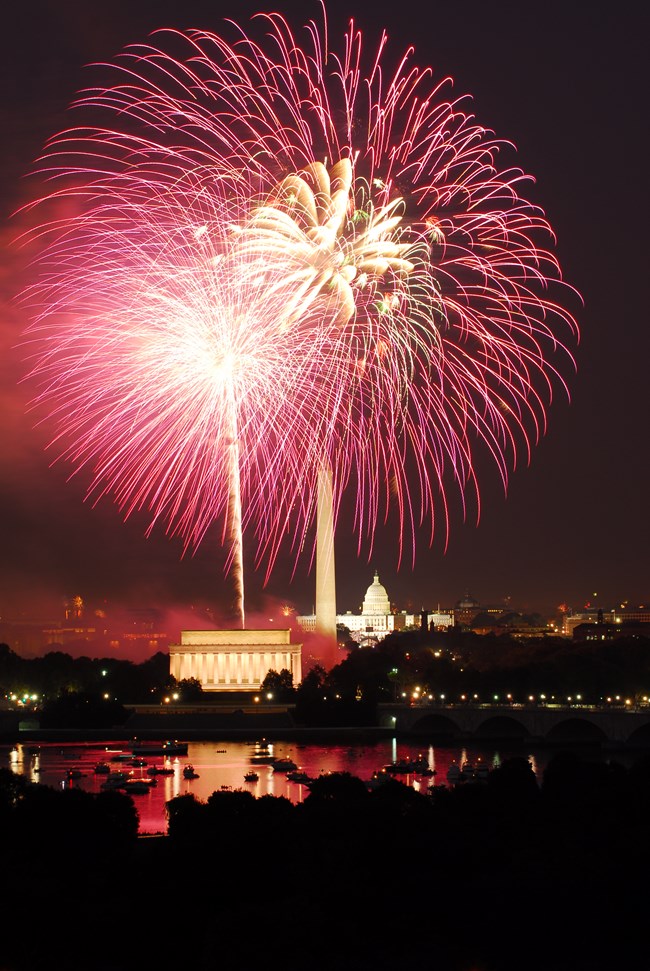“Every spot of the old world is overrun with oppression. Freedom hath been hunted round the globe. Asia, and Africa, have long expelled her. Europe regards her like a stranger, and England hath given her warning to depart. O! receive the fugitive, and prepare in time an asylum for mankind.” Thomas Paine, Common Sense.
Every July 4 commemorates not merely the date when the Declaration of Independence was signed, but also represents the culmination of thousands of years of human history and the practical application of that history’s lessons into a Republic by a handful of remarkable and faith-filled men.
It is one of the most significant dates in the human story. It is perhaps its most noble.
July 4, 1776, defines the liberation of the individual from the tyranny of force and identifies the source of human rights, not as an arbitrary consignment from a king, a government, or a dictator, but as a God-given gift, permanent and irreversible.
The Declaration of Independence demarks the old and new world, the ancient from the modern.
The Founders did not merely sign a document that severed the American Colonies from the British Crown. Their signatures also marked them as traitors to the King and would be their death warrant if their quest for human liberty failed to purchase victory through persuasion or ultimately force.
The intellectual framework for the Declaration of Independence had been fashioned over nearly a century in the early churches of the American colonies, born in the reformation of Christianity and greatly influenced by the Enlightenment thinkers such as Locke and Montesquieu, and others.
The two mighty movements of faith and reason converged into a vast tide that reshaped the world.
While the early colonial ministers and the Enlightenment thinkers helped lay the intellectual groundwork for the future nation, the Great Awakening – an empowering evangelical revival that swept the colonies in the 1730s and the 1740s – helped establish the character of the coming revolution.
A series of escalating confrontations between the colonists and the British began in earnest with the Boston Massacre in 1770, the Tea Act enacted by the British Parliament in 1773, and the colonial response to the Tea Act which ended with the Boston Tea Party in December of 1773. These incidents were followed by the hardening position of the British Parliament in 1774 with more punitive economic and civic restrictions, known as the Coercive Acts, which the colonists re-labeled the Intolerable Acts.
The First Continental Congress met in Philadelphia on September 5, 1774, to collaborate as a federation of colonies on a series of entreaties and grievances to King George III, with many delegates still hoping that the Crown and the “provinces” could come to a peaceable way forward. Importantly, out of this first Congress, a Declaration of Colonial Rights was accepted, which would lay a foundation for the advancing revolution. One was:
“That they [the colonists] are entitled to life, liberty and property: And they have never ceded to any foreign power whatever, a right to dispose of either without their consent.”
The British Parliament nor the King responded.
In reality, the revolutionary war had already begun by the time the Second Continental Congress convened on May 10, 1775 (assuming the powers of a national government). The battles of Lexington and Concord and other skirmishes had occurred in April. On June 14 the Congress created the Continental Army and then-delegate to the Congress from Virginia, George Washington became its Commanding General. The Battle of Bunker Hill would occur three days later.
Thomas Jefferson, then a thirty-three-year-old replacement delegate from Virginia, arrived in Philadelphia on June 20, 1775. Although there is some confusion concerning the exact order of events, Mr. Jefferson produced a draft, and Delegate John Dickinson from Pennsylvania produced the final copy of the Declaration of the Causes and Necessity for Taking Up Arms, detailing colonial grievances – again – against the British Parliament. The Declaration passed on July 6, 1775 (followed by a final appeal to the Crown on July 8). The Declaration stopped just short of declaring independence, in deference to those who still held hope for an agreement with the Crown.
However, the time for peace had passed – the die was cast. Through May of 1776, the Congress and its delegates worked to have the various colonial governments grant authority for a vote for independence, which was finally approved on July 2, 1776.
Anticipating the approval for independence, Thomas Jefferson, part of a five-member committee that delegated to him the primary task of writing the Declaration, had already begun work on June 11. He reclaimed parts of the many “declarations of rights” that already existed in Virginia and other colonies, other documents that he had written, and the wealth of ideas that had anchored the very concepts of human liberty that had made the revolution inevitable.
The final draft of the Declaration of Independence was adopted on July 4.
The fifty-six signers of the Declaration of Independence did not merely sign a document; they signed their place in history. The cost to them personally would not be a mere inconvenience, but it would be their lives and their fortunes. It was a decision without gray.
We live on the breath of their greatness and their faithfulness two hundred and forty-four years on.
“And when the history of this world is read in the next, God’s grace will be recalled. It is the stuff of history. It is the stuff of greatness. It is the stuff of common people living at the bend of the river tending the rich land. It’s the stuff of dreams one generation to the next. Why not? We’re Americans.” (Why Not? We’re Americans 2003, Michael Giere.)

